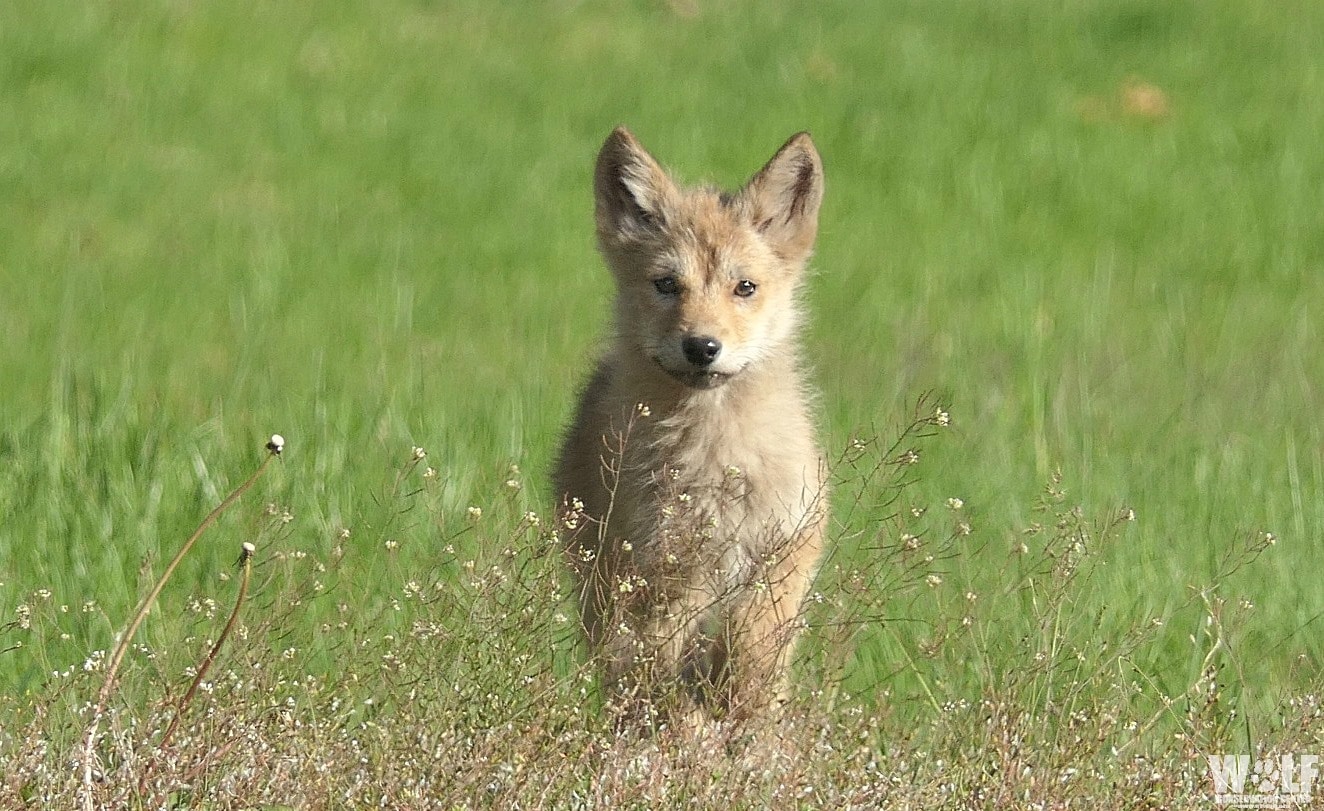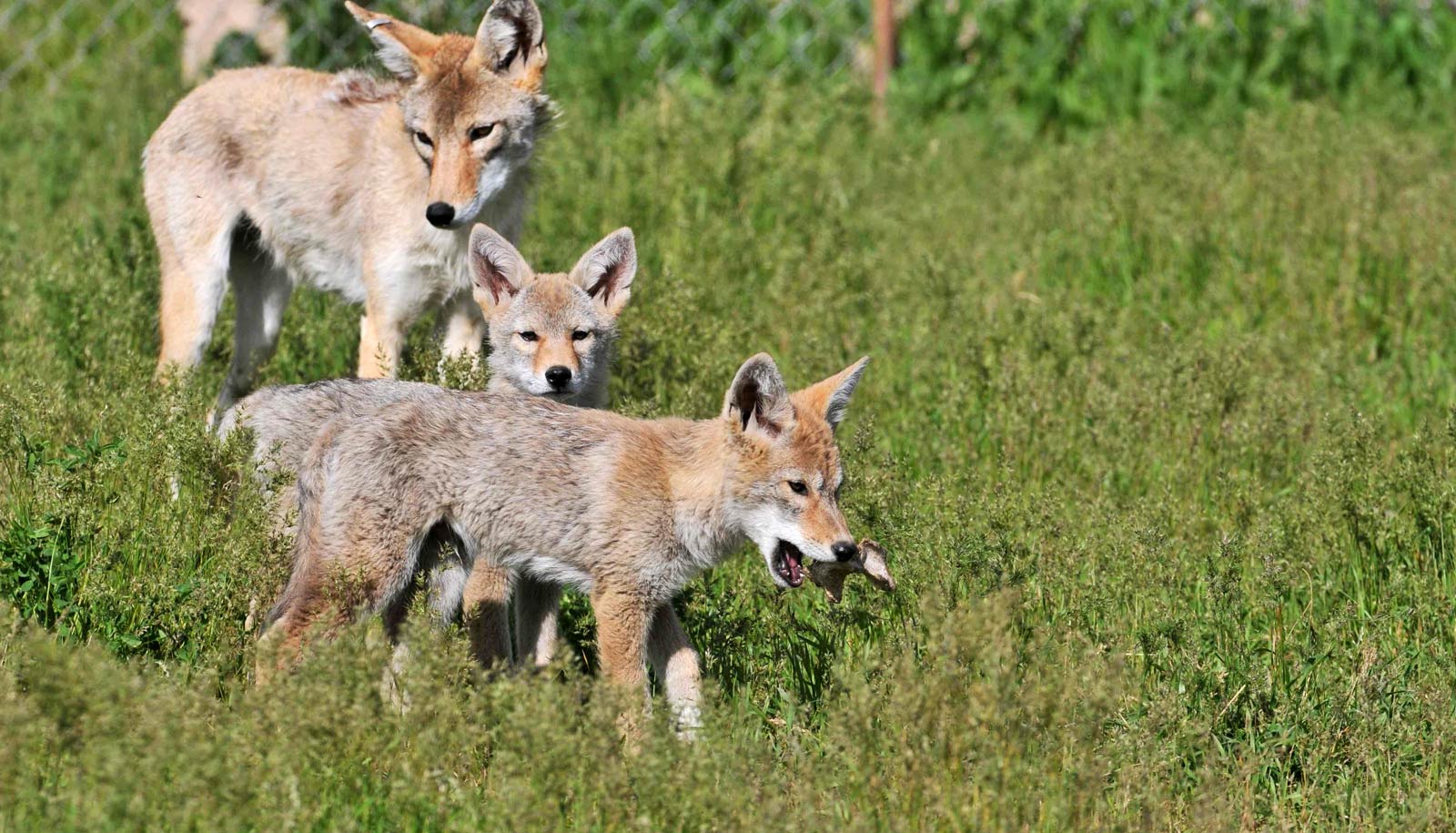

Now that you know what these noises are meant for, you might understand why a pup howls. And the infamous and spine chilling howl you hear is done to keep in touch with the coyotes living nearby. Similarly, barking followed by a squeal is an indication of threat. While the yelp you hear might be signaling a complement or denouncing each other.

Each noise means a different command or message.įor instance, the huffing and snarling sounds you hear are the mothers calling the pups.

These noises that a coyote make is being used as a mode of communication. Before we discuss whether these pups do bark or yip, let us first see why coyotes make these sounds. It has been seen that even a couple of weeks old coyote can tilt their head backward can give a tiny high pitched howl. Similar to an adult coyote, a baby coyote can bark, howl, and yip. Coyotes stick with their offspring for almost a year, after which the family splits.īy the time the family splits, the pups would have turned into adults, and they venture out hunting alone, staking out their territory, finding a mate, and forming a new pack. These pups, once they are around 3 months old, start accompanying their mother to learn the basics of hunting. Mother coyotes won’t let them go too far away from their sight during this time. Once these pups begin to eat semi-solid food, which generally happens after 3 weeks, they slowly begin to venture out of their den. After which they begin to slowly feed on semi-solid food apart from mother’s milk. They survive solely on mothers’ milk for a period of up to 3 weeks. Unlike other wild animals, these pups will be born after 90 days and will be fully dependent on their mother for almost 1 to 2 months. The mating season of coyotes is generally between January and March, and they have an average gestation period of 60 days. How long does it take the coyote pups to be born and be independent? This behavior is very different from that of a dog’s pup. Though a coyote pup’s tail is not as bushy as that of an adult, they will still keep the tail pointed downwards while they run. The best way to identify a coyote pup is to closely observe its tail while running. Their appearance starts changing by the end of 4th week with their muzzles becoming pointed, forehead becoming flat, and tail turning bushy. They have short muzzles, small ears, and dainty little feet till they are around four weeks old. The adult coyotes will be close by, and they might jump in out of the blue and start attacking.Ī coyote pup closely resembles a Chihuahua, and they don’t look much like an adult coyote. The panicked pup will start to bark or whine, which means trouble for you. Unlike dogs, coyotes can be quite aggressive, especially when there are babies involved.Ĭoyote pups are curious enough to let you get close to them, and the chances are that they might panic when you are near. It is quite difficult to distinguish a coyote pup from a dog, which makes it dangerous.
COYOTE PUP HOW TO
How to identify a baby fox and a baby coyote? Baby coyote vs baby foxĪ baby coyote looks almost similar to a dog’s puppy.How much do baby coyotes weigh, and how big are they?.How long does it take the coyote pups to be born and be independent?.This will cause the latex to expand and will ultimately affect the sound quality and also lifespan of the mouth call. If you leave your mouth call out in the sun or in your vehicle this can damage the latex. Heat is a very big problem with mouth calls.Store them in a cool, dark place afterwards. Once you have left them dry you can then remove the toothpick(s) and place them back in some sort of bag or container. Then allow them to air dry for several hours, DO NOT SET THEM IN THE SUN. Insert a toothpick between the top and bottom reeds. Once they have been cleaned, carefully dry them with a towel or paper towel. After use, be sure to rinse them with a mouthwash and water mixture or use tap water.Here are a few tips for prolonging the life of your diaphragm calls. You should tend to your mouth calls all season long. Caring for your diaphragm calls is very important to maintain ultimate performance.Imitates realistic coyote pup distresses and whines.003mm prophylactic reeds, middle cut on bottom reed This mouth call is proudly made in the USA. The Pup Distress mouth call imitates realistic coyote pup distresses and whines. Each call in this new line is specifically made for a target sound. These mouth calls are easy to use and have great volume capabilities. The versatility that diaphragm calls have allows you to quickly let out a coyote howl, pup distress, or animal distress on your stand. FOXPRO is excited to introduce a new line of diaphragm predator calls.


 0 kommentar(er)
0 kommentar(er)
